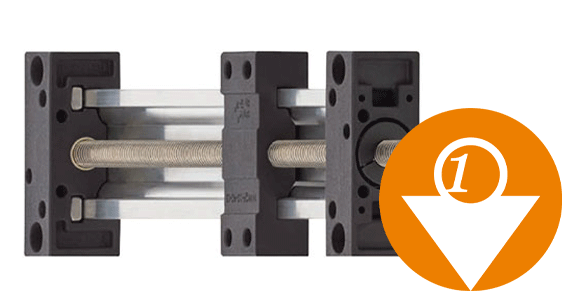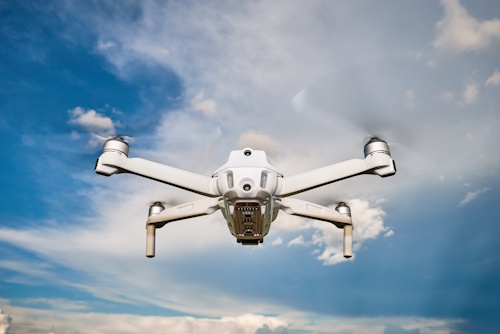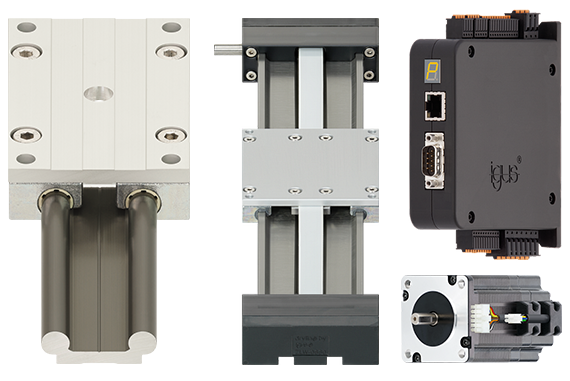How to Choose a Linear Actuator
Screw-driven or belt-driven linear actuator?
Linear actuators are an important element in automation and mechanical engineering and help with a variety of tasks, from simple to extremely complex ones. Picking the right type of linear actuator is very important, since linear actuators and linear slides can be driven in a wide variety of ways.Lead screw driven actuators—for high accuracy
If a lower speed, yet a high level of accuracy, is required, linear actuators with trapezoidal threads are usually a good option. The linear axes with lead screw drives are also great options for high axial thrust forces. Due to the critical speed limit for lead screws, the travel path (max. 1,500 mm/5 feet), the speed, and thus the speed of the lead screw, are severely limited. The recommended speed limit depends on the lead screw diameter.
Trapezoidal thread
With our dryspin® high helix thread, accuracy and medium speeds can be combined due to the special thread pitch; however, a maximum travel distance of 1,000 mm/39 inches must be observed.
High helix thread for medium speeds
- For format adjustments
- In extreme environments (heat, cold)
- When corrosion resistance is required
- When it needs to be low-noise
- For shorter travels up to 1.5 meters or 5 feet
- For low to medium speed with high accuracy
Structure of a linear axis with spindle drive

Linear axis with spindle drive
- Grease-free due to plastic bearings and plastic nuts
- Shaft material (aluminum, stainless steel, carbon)
- 8 trapezoidal thread pitches, 4 high helix thread pitches
- Base body made of stainless steel, aluminum, zinc or plastic
- Spindle machining according to drawing or spindle journal
- Accessories available
- When high speeds are required
- For travels up to 3 meters/9.8 feet
- If the structure should be particularly flat
- If positioning accuracy may be> 0.1mm
Structure of a belt driven linear actuator

Linear axis with toothed belt drive
- Deflection with deep groove ball bearings
- Grease-free linear guide with plastic plain bearings
- Various sled lengths
- Polyurethane (PU) or neoprene timing belts
- Hard anodized aluminum
If cost is the number one concern, we have the perfect series
With the drylin ECON series, you can save over 30% on costs while still improving the technology of your linear assembly at the same time.



